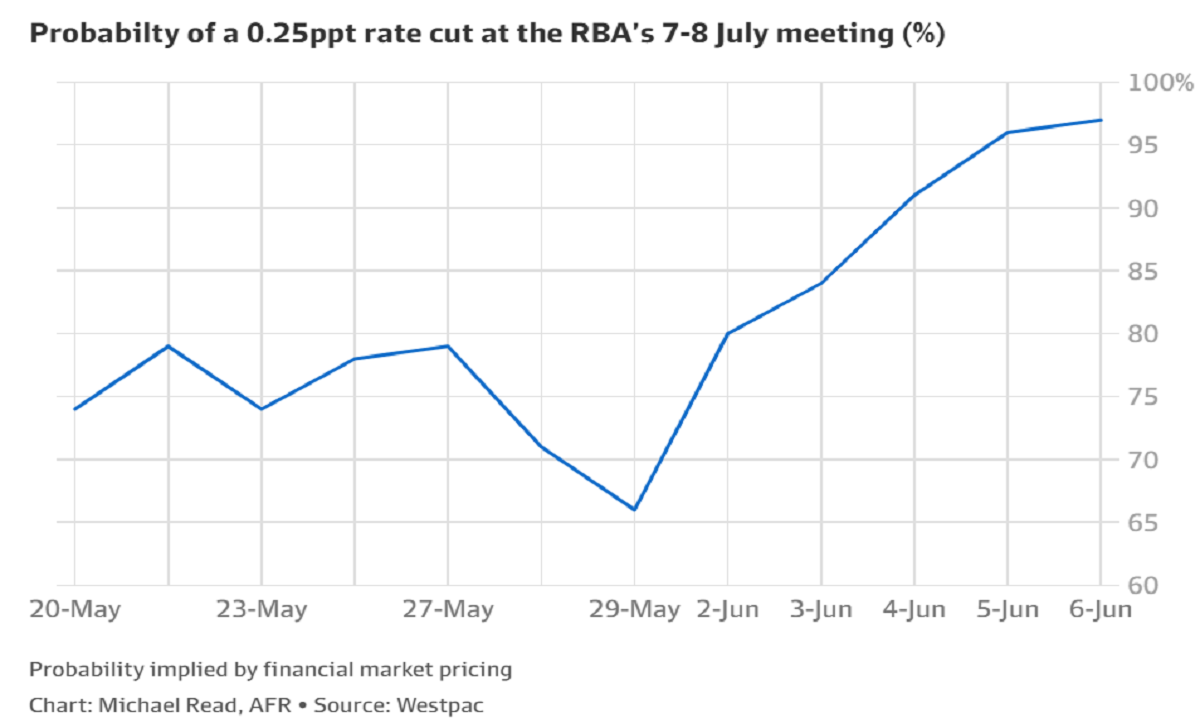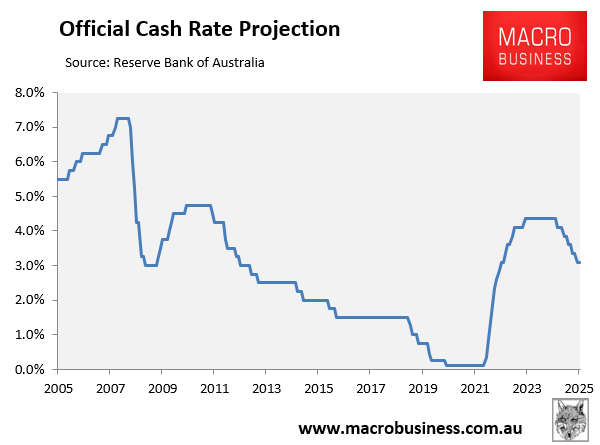According to Westpac, financial markets have now priced a 97% chance that the Reserve Bank of Australia (RBA) will reduce the official cash rate (OCR) at its monetary policy board meeting in July.

The case for more rate cuts was strengthened by the Q1 national accounts released last week, which showed that aggregate GDP growth grew by only 0.2% in the quarter, which was less than half the 0.45% forecast in the RBA’s latest monetary policy statement.

Source: Alex Joiner
Real per capita GDP also fell by 0.2% in Q1 2025, the ninth decline in eleven quarters.

Consumer spending also rose by only 0.1% in April and the total number of jobs across the domestic economy fell by 0.2% in the first three months of the year.
Warren Hogan from EQ Economics has been one of Australia’s leading interest rate hawks, continually warning about inflation and calling for higher interest rates.
However, even Hogan has flipped, urging the RBA to reduce the cash rate by a larger-than-usual 35 basis points, to 3.5%, at its July meeting.
“Despite a genuine boost to real disposable incomes, Australian consumers are unwilling to loosen the purse strings in a meaningful way. Discretionary spending showed signs of a genuine recovery in the final three months of 2024, but this has petered out in early 2025”, Hogan said.
Financial markets are still tipping three more 25 basis point reductions in the OCR this year to 3.10% by year’s end.

If this forecast came to fruition, it would mean that the OCR will have fallen by 1.25% in less than a year.
The biggest drawback of rate cuts is that they will stimulate housing demand, which drives home prices even higher and makes housing structurally less affordable.
This is the sad reality of modern Australia, which now represents a housing bubble with a stuttering economy attached.

